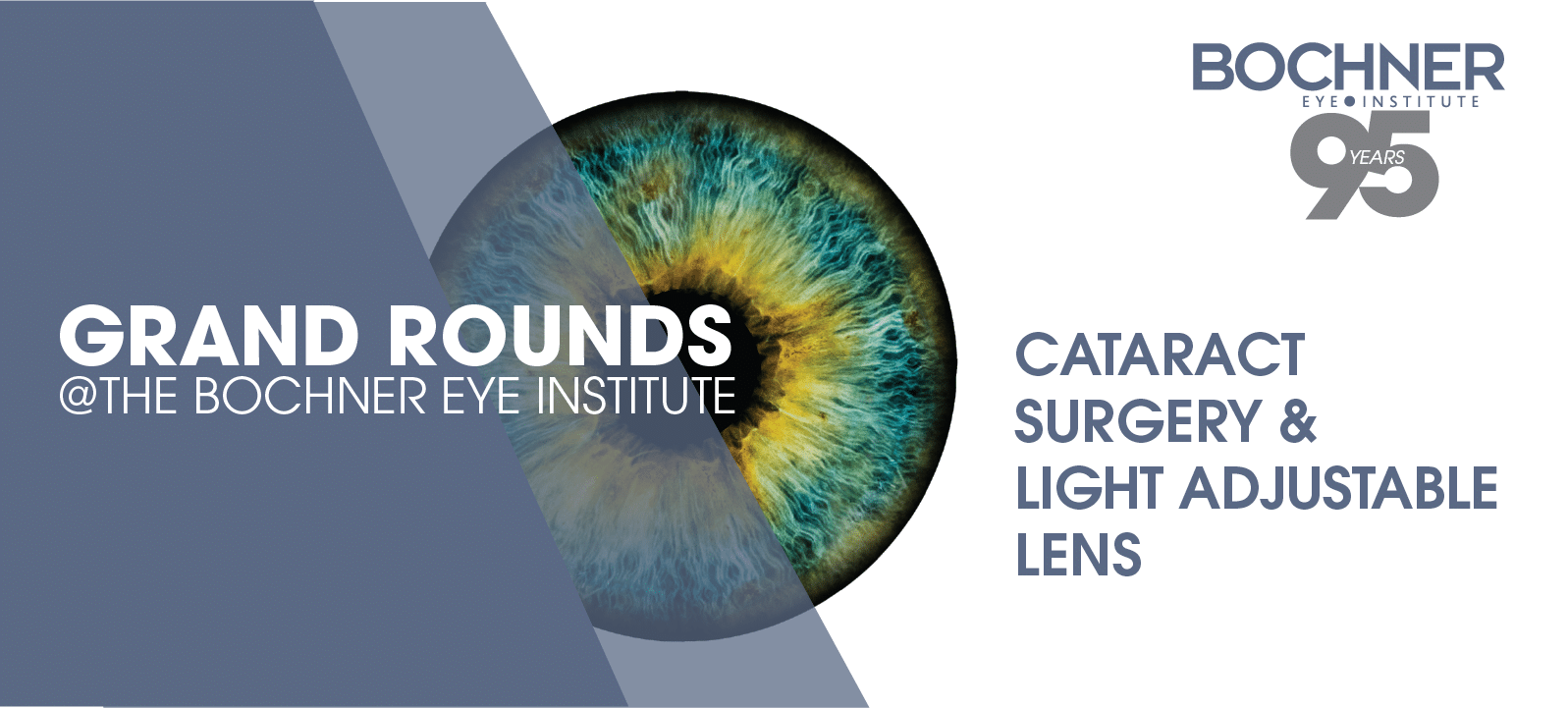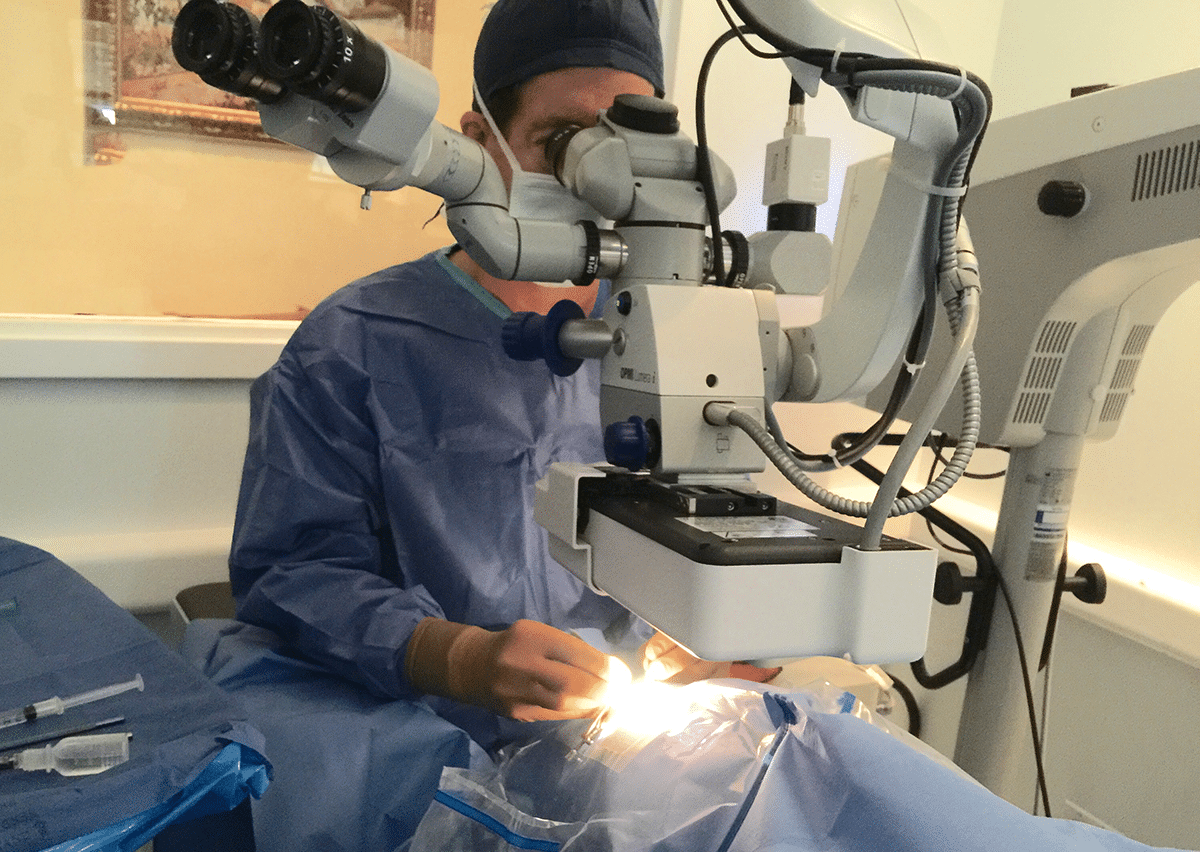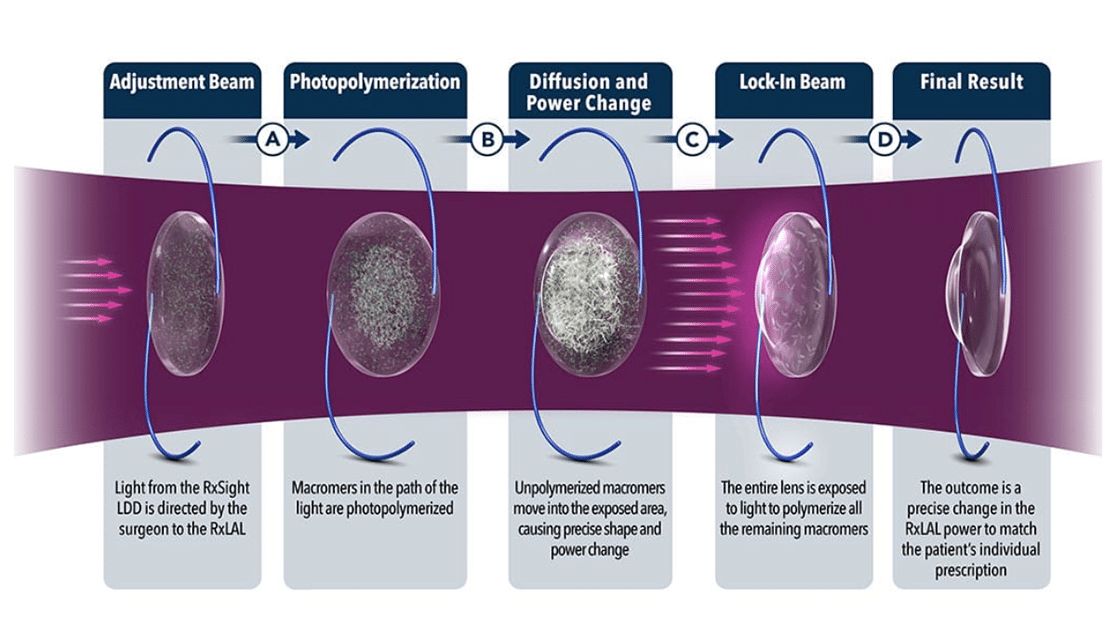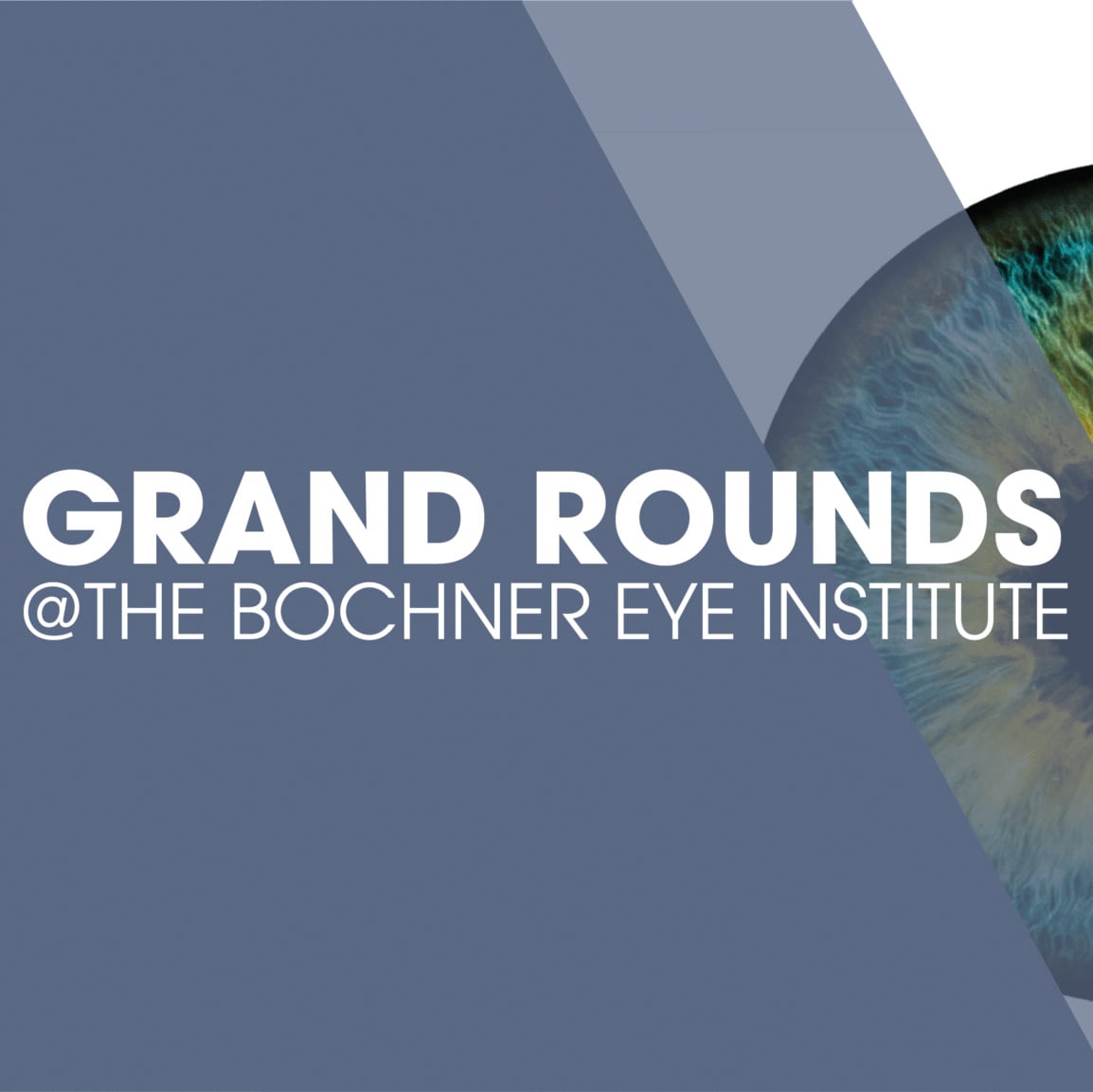
CASE OVERVIEW
A 63 year-old male presented with an interest in vision correction surgery. He wanted freedom from glasses for most activities. He had previously undergone LASIK 20 years ago. His refractive error in the right eye was -1.75 -1.00 x 60 20/40 and in the left eye -2.50 – 0.75 x 175 20/30. He had moderate nuclear sclerotic cataracts. His corneal topography showed typical central flattening from myopic LASIK. OCT of the macula was normal.
WHAT ARE THE REFRACTIVE TREATMENT OPTIONS?
He could have a multifocal implant, extended depth of focus (mini-monovision), or advanced aspheric implant (mini-mono). The potential issue is that IOL calculations are not as accurate in eyes that have had laser vision correction. If an enhancement is required to optimize vision, LASIK cannot be easily repeated because of the increased risk of epithelial ingrowth. PRK is the most common technique, but outcomes can vary because of the prior LASIK.
WHAT WAS DONE:
The light adjustable lens (LAL) is an excellent option in the scenario of prior laser vision correction. The patient had surgery to both eyes with insertion of the LAL.

POST-OPERATIVE COURSE:
Uncorrected vision during the first 2 weeks was 20/25 for distance in both eyes. At 3 weeks postop the light delivery system was used on the right eye to correct + 0.75 -0.75 x 83 to aim for distance vision, and the left eye to correct +0.25-1.00 x45 and induce one diopter of myopia. After the light adjustment, he had an uncorrected acuity of 20/20 in his right with a + 0.25 error and his left eye was J3 with a -0.75 D. He wanted better near vision, so another adjustment was performed and he achieved J2 with a refractive error of -1.00. Two lock-in treatments were then performed. He was pleased with his outcome.

KEY LEARNING POINTS:
The Light Adjustable Lens (LAL) is a cutting-edge technology in cataract and refractive surgery, offering customization after implantation. Here are nine key takeaways:
- LAL is another option for all lens based procedures. It is most advantageous in those that had prior laser vision correction that are accepting of monovision.
- Contraindications for LAL surgery include a dilated pupil less than 5.3 mm, corneal astigmatism > 3 D, unwilling to wear UV blocking glasses outside during the healing process, and not willing to return for followup treatments.
- Post-Surgery Customization: Unlike traditional intraocular lenses (IOLs), the LAL can be fine-tuned for optimal vision after surgery. Adjustments are made using ultraviolet (UV) light to reshape the lens to the patient’s specific needs.
- UV Light Adjustments: Following surgery, a series of non-invasive UV light treatments are applied to modify the lens’s shape, which allows for the correction of residual refractive errors, including nearsightedness, farsightedness, and astigmatism.
- Multiple Adjustments: The lens can be adjusted multiple times, typically within a 2-4 week window post-surgery. This ensures precise vision correction before the lens is “locked in” with a final UV treatment.
- Personalized Vision: LAL offers highly personalized vision outcomes, improving patient satisfaction. The fine-tuning can optimize both distance and near vision, sometimes reducing the need for glasses.
- Requirement of UV Protection: Patients must wear special UV-blocking glasses during the adjustment period to prevent unintended changes in the lens before the final adjustment and lock-in.
- Finalization: Once the patient’s vision is optimized, a final UV treatment locks the lens in place, preventing further changes.
- LAL + has recently become available in Canada, which has increased negative spherical aberration to increase the depth of focus, and allow enhanced near vision.


